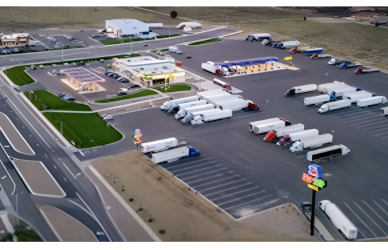The Federal Reserve raised its key interest rate for the 11th time in just 17 months on July 26. This decision is meant to keep inflation in check, but some worry it could push the economy towards a recession.
With the latest hike, the Fed’s benchmark short-term rate now stands at 5.3% – the highest level seen since 2001. This increase could have a ripple effect on mortgages, auto loans, credit cards, and business borrowing, potentially driving up costs even further.
Despite a slowdown in inflation, the Fed remains cautious. They believe the economy is still growing too rapidly for inflation to stabilize at their 2% target and with consumer confidence at a two-year high, Americans are continuing to spend, whether it’s on travel, entertainment, or everyday purchases. Furthermore, businesses are thriving, with low unemployment rates and ongoing job growth.
Based on the latest data, it seems that a recession is not on the horizon; however, the Fed’s cautious approach and interest rate hikes highlight their efforts to ensure a stable economic future.
In a statement, the Fed said the economy “has been expanding at a moderate pace,” a slight upgrade from its assessment in June.
Chair Jerome Powell, speaking at a news conference, announced a positive update from the Fed’s staff economists. They have revised their outlook and no longer anticipate a recession. It is important to note that back in April, the minutes of the central bank’s March meeting had indicated a possibility of a “mild” recession later this year.
“Given the resilience of the economy recently,” he said, “they are no longer forecasting a recession.”
Will the recent increase in interest rates be the final one for the Federal Reserve, or can we expect more hikes later this year? In a news conference following the announcement of the rate increase, Powell stated that the central bank has not yet made any decisions regarding future rate hikes; however, he emphasized that the battle against inflation is far from over.
“The process of getting inflation down to 2% has a long way to go,” Powell said.
The Federal Reserve’s policymakers will carefully evaluate various economic data to determine their next course of action at the upcoming policy meeting. During their previous meeting in June, they indicated their expectation to raise rates twice more. As they convene again on September 19-20, Chairman Powell highlighted that they will have access to a significant amount of additional data, including two inflation reports, two reports on employment, updated figures on consumer spending and wages.
There is speculation among some economists that the Fed may opt to postpone a rate increase in September and consider a hike in November instead.
In recent weeks, a number of Fed officials have expressed concerns about the potential impact of continued strong job growth on wage demands, as workers may seek compensation for two years of inflation. Significant increases in wages can fuel inflation if companies respond by raising prices for consumers.
There is also optimism, however, that the steady easing of inflationary pressure could allow the Fed to successfully navigate a challenging “soft landing” scenario, where rate hikes effectively curb inflation without plunging the economy into a painful recession.
According to economists at Goldman Sachs, the probability of a recession has been downgraded to just 20% from 35% earlier this year. Deutsche Bank, one of the first major banks to predict a recession, is also feeling more optimistic about the economy’s trajectory; however, they still anticipate a downturn later this year.
Matthew Luzzetti, the chief U.S. economist at Deutsche Bank, highlights durable consumer spending as a crucial factor driving growth. Many Americans still have savings from the pandemic period when the government provided stimulus checks and people cut back on travel, dining out, and entertainment.
The job market remains robust, with employers adding 209,000 jobs in June and an impressively low unemployment rate of 3.6%. This figure is similar to the rate seen when the Federal Reserve began raising interest rates in March 2022, underscoring the unexpected economic resilience.
Inflation has shown a significant decrease, with June’s year-over-year inflation at 3% compared to a peak of 9.1% in June 2022; however, it’s important to note that the “core” inflation measure, which excludes volatile food and energy costs and is favored by the Federal Reserve, still saw a 4.6% increase in May from the previous year.
“Core is still quite elevated,” Powell said.
Key Federal Reserve officials, such as Christopher Waller and Lorie Logan, have expressed their belief that the economy has already incorporated the impacts of previous rate hikes. With inflation persisting above the Fed’s desired level, however, they suggest that further hikes may be necessary in order to effectively curb rising prices.
Aligning with this perspective, Powell reiterated that the previous rate hikes have not yet exerted their full impact due to insufficient duration and restrictiveness.
“The process still has a long way to go,” he said.
Analysts warn that reducing inflation from 9% to 3% was just the beginning. Achieving the Federal Reserve’s target of 2% will be a more challenging and time-consuming task.
Source: Transport Topics











